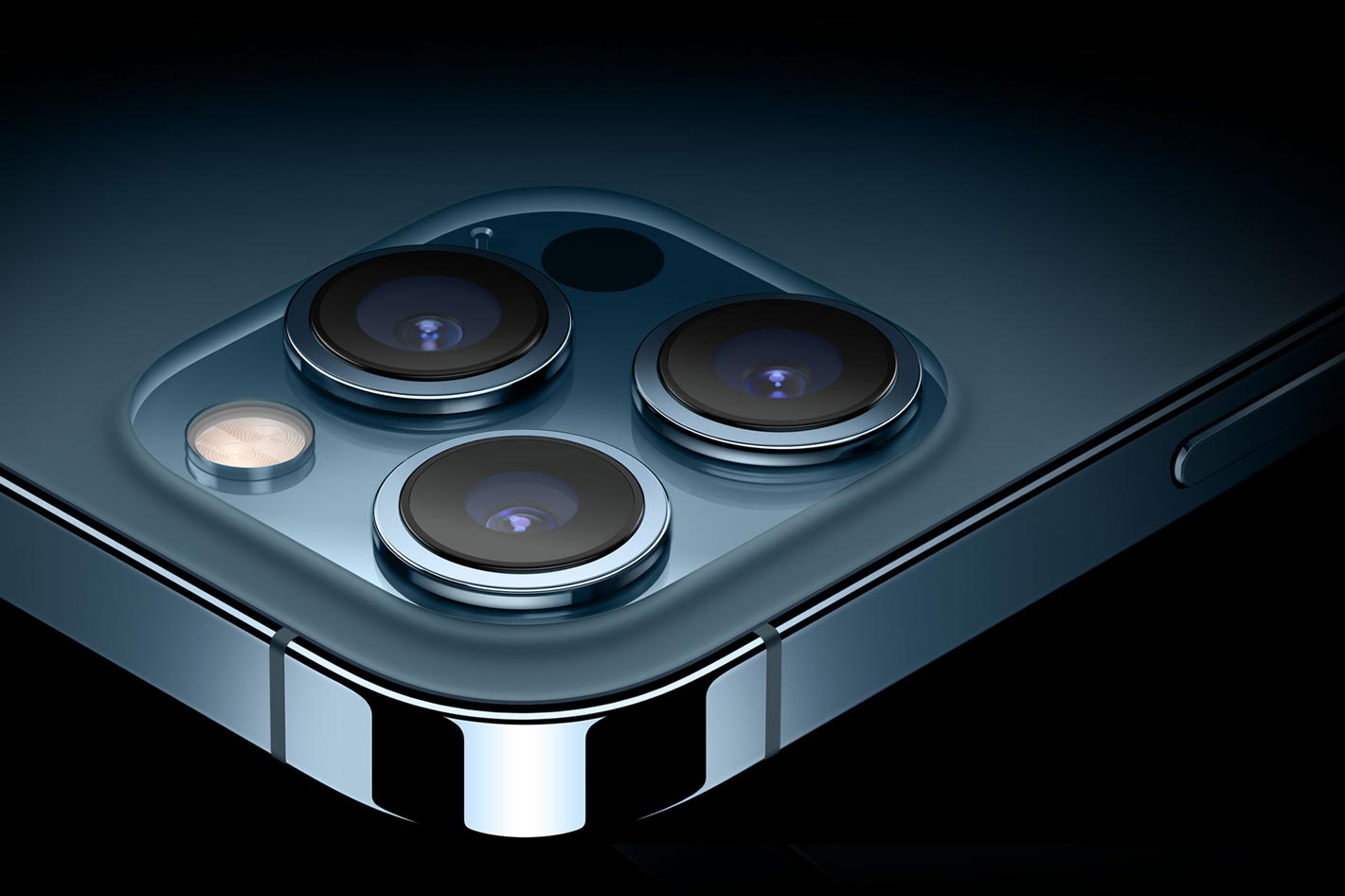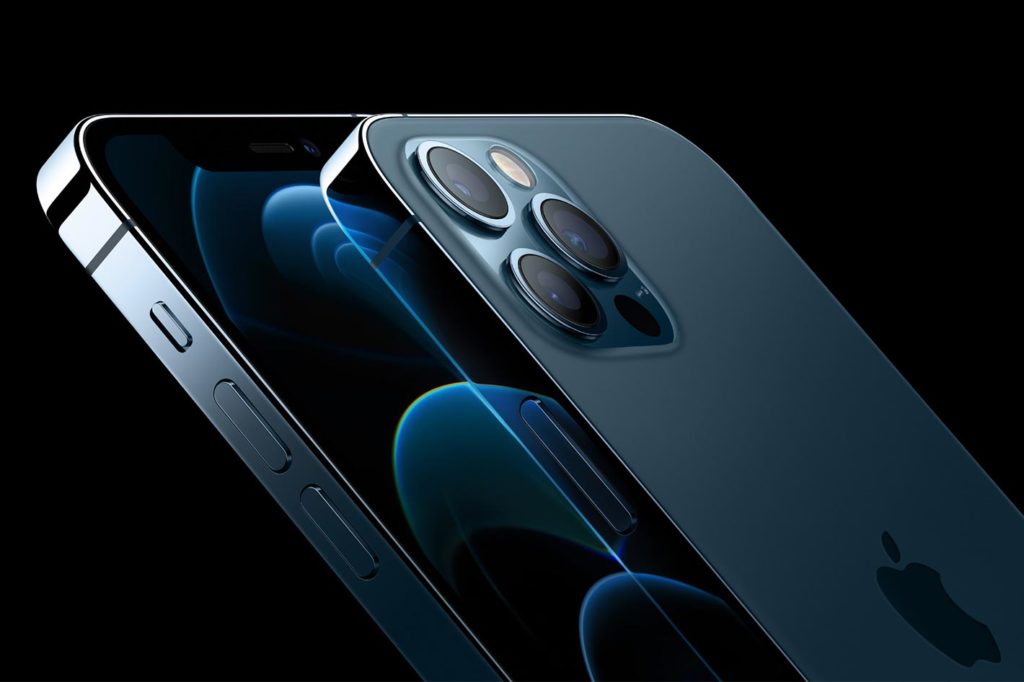
When cinematographers as Emmanuel “Chivo” Lubezki agree to pick a smartphone and use it for filming, stating that with these tools filmmakers around the world can make movies that otherwise would be impossible, you start to listen. Apple’s new iPhone 12 Pro is the new kid in town, joining other smartphones, like the Sony Xperia 1 II, that want to seduce filmmakers.
Introduced this month, the new iPhone 12 Pro and iPhone 12 Pro Max will be available for pre-order on October 16 and November 6, respectively, with the first units being delivered from October 23 for the first and November 13 for the second model. The iPhone 12 Pro and iPhone 12 Pro Max will be available in 128GB, 256GB, and 512GB models in graphite, silver, gold, and pacific blue starting at $999 and $1,099, respectively.
The first thing you’ll notice about the iPhone 12 Pro models is that they feature a new design and edge-to-edge Super Retina XDR displays, the largest ever on iPhone, protected by the all-new Ceramic Shield front cover, which provides the biggest jump in durability ever on iPhone, according to Apple. iPhone 12 Pro models also introduce a new LiDAR Scanner for immersive augmented reality (AR) experiences and MagSafe, which offers high-powered wireless charging and an all-new ecosystem of accessories that easily attach to iPhone.
The iPhone 12 Pro and iPhone 12 Pro Max promise to deliver an advanced 5G experience, featuring the most 5G bands on any smartphone, to offer the broadest 5G coverage worldwide, boasting improved speeds for faster downloads and uploads, higher quality video streaming, more responsive gaming, real-time interactivity in apps, FaceTime in high definition, and much more. Customers will also be able to enjoy a secure, fast connection, reducing the need to connect to public Wi-Fi hotspots. Everything you expect from a high-end smartphone is here.
Now that your key questions have been answered, it’s time to look at what these two smartphones from Apple offer and how they can change the way you photograph or capture video, which are two key aspects of the new models. Inside the case the key element is the Apple-designed A14 Bionic chip, the fastest chip in a smartphone, which powers impressive computational photography features including the all-new Apple ProRAW for more creative control in photos, and enables the first end-to-end Dolby Vision video experience, up to 60 fps.
The A14 Bionic chip enables powerful computational photography and faster photo and video editing right on device. Together with the new image signal processor (ISP), A14 Bionic drives increased image quality and enables powerful computational photography capabilities not possible with traditional cameras, says Apple. The iPhone 12 Pro models also feature the new Apple ProRAW, coming later this year – in a future iOS 14 update – which combines Apple’s multiframe image processing and computational photography with the versatility of a RAW format. Users can experience full creative control over color, detail, and dynamic range natively on iPhone or with other professional photo editing apps.
The pro camera system on iPhone 12 Pro models includes new Wide cameras for even better low-light performance, an expansive Ultra Wide camera, and a Telephoto camera for capturing images and video. iPhone 12 Pro features the new seven-element lens Wide camera with an ƒ/1.6 aperture, the fastest ever on an iPhone, for 27 percent improved low-light performance in photo and video; the Ultra Wide camera with a 120-degree field of view, perfect for capturing more scene in tight spots or epic landscapes; and a 52 mm focal length Telephoto camera, great for framing portraits, bringing the optical zoom range to 4x.
iPhone 12 Pro Max takes the pro camera experience even further. The new ƒ/1.6 aperture Wide camera boasts a 47 percent larger sensor with 1.7μm pixels for a massive 87 percent improvement in low-light conditions. It also includes the expansive Ultra Wide camera and a 65 mm focal length Telephoto camera for increased flexibility with closer shots and tighter crops. Combined, this system offers 5x optical zoom range.
When capturing images, Apple claims that improvements to Night mode, now expanded to the TrueDepth and Ultra Wide cameras, allow for an even brighter picture. And Night mode Time-Lapse delivers longer exposure times for sharper videos, better light trails, and smoother exposure in low-light scenarios when used with a tripod. Deep Fusion, now better and faster, comes to all cameras, and with the new Smart HDR 3, users can expect more true-to-life images, even in complex scenes.
In terms of video the company claims that iPhone 12 Pro models offer the highest quality video in a smartphone, as it jumps from 8- to 10‑bit HDR recording, capturing 700 million colors for much more lifelike video. Then it goes one better, and these are the first cameras and only devices in the world to enable an end-to-end experience for HDR video with Dolby Vision, up to 60 fps, and even better video stabilization for cinema-grade productions.
Dolby Vision grading is processed live and sustained during editing, whether in the Photos app or iMovie, and coming to Final Cut Pro X later this year. Dolby Vision takes advantage of the Super Retina XDR display for amazing contrast during capture and video playback, and users can share their videos with support for AirPlay at up to 4K Dolby Vision to external devices.
Because screen size and quality are key factors when viewing or editing video, the 6.1-inch iPhone 12 Pro and 6.7-inch iPhone 12 Pro Max displays feature a Super Retina XDR display with systemwide color management for industry-leading color accuracy. And iPhone 12 Pro Max offers the largest display ever on an iPhone and the highest resolution featuring nearly 3.5 million pixels for a remarkable, true-to-life viewing experience. These OLED displays bring HDR video content to life, reaching 1200 nits peak brightness.

